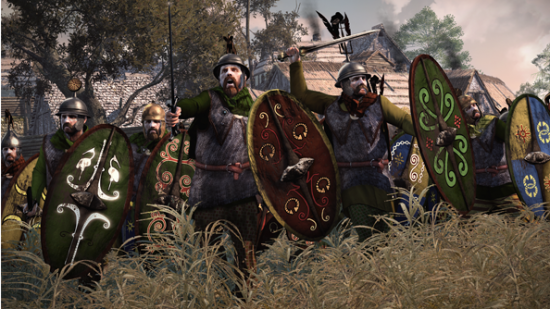Total War: Rome 2 is out now; here’s our Total War: Rome 2 review.
Representatives from the Total War community were invited to join Creative Assembly at a San Francisco event this week and ask them searching questions. They readily obliged, and emerged hours later clutching some big numbers and an idea of what sort of PC you’ll need to run Rome 2 (clue: yours will probably do).
In total, Rome 2 will feature 183 territories, split between 117 factions. Battles will play host to approximately 500 different unit types, 30 city variants, and about 70 kinds of building.
Some of those nearly 200 territories will be accounted for by the oceans, which CA confirmed will be divided into several regions. One faction’s navy will have dominance in any particular region, but a “zone of control effect” will need to be considered when raiding trade routes, for instance.
Community members grilled developers on the as-yet-unseen campaign map, which will now reportedly display city growth more progressively. As buildings are developed, they will be represented visually on the map.
What’s more, a stance system will allow players to adapt their armies in reaction to events on campaign map. Stances include ‘Forced March’ and ‘Ambush’, and come lumbered with benefits and drawbacks in stats like movement speed and vulnerability to attack.
A broader balancing mechanic will see large, military-driven player empires fraught with internal conflict and civil war, to ensure that the game remains challenging in its later stages.
Spec-wise, Rome 2 will cater to the laptop brigade with support for low end machines, including those with integrated graphic chips. Creative director Mike Simpson was apparently “very specific” about the game’s scalability, and said that CA had worked with Intel and other manufacturers to adapt Rome 2 for modest rigs. CPU usage will also reportedly be more efficient on low end PCs.
Let’s have a show of hands: how many of you play your strategy games on creaky PCs? I know I do.
